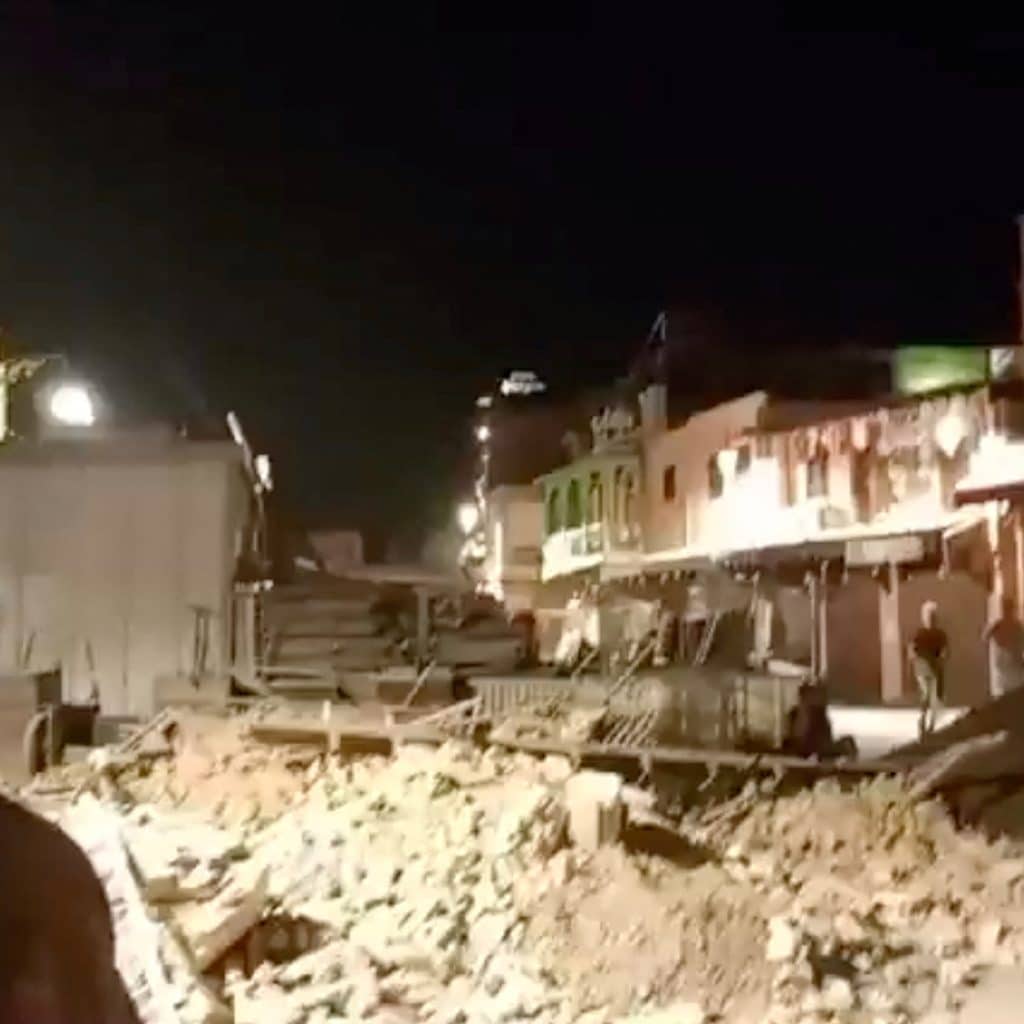The Morocco earthquake causes the Earth to tear apart

The Morocco earthquake causes the Earth to tear apart
The Morocco earthquake causes the Earth to tear apart
The Earth in general has witnessed a record number of earthquakes and aftershocks since the beginning of the year.
The last of these earthquakes was the violent one that struck Morocco at dawn today with a magnitude of 7 on the Richter scale, and was followed by hundreds of aftershocks. And the Moroccan Ministry of the Interior announced that the earthquake, which was centered in the Aigil region in Al Haouz province, caused the collapse of a number of buildings in Al Haouz, Marrakesh, Ouarzazate, Azilal, Chichaoua and Taroudant. Moroccan media described the earthquake as the strongest earthquake to hit the Kingdom, while cries for help rose from under the rubble in several Moroccan cities. The violent earthquake damaged buildings from the villages of the Atlas Mountains to the historic city of Marrakesh. The earthquake caused severe material damage, according to pictures and scenes reported by the local press and social networks.
Usually, according to scientists, earthquakes occur near the boundaries of lithospheric plates and active faults.
Earthquakes happen more often than we know about, estimated at about 100 a year! But some of them turn into devastating earthquakes that pose a threat to human life and buildings, which came against the backdrop of large movements of the earth's crust at a shallow depth, while the number of observed earthquakes does not exceed more than a hundred or less per year.
As previously explained by Professor Nikolai Shestakov, Professor of Geographical Resources Monitoring and Development at the Polytechnic Institute of the Russian “Far Eastern Federal University”, he explained how earthquakes occur in a simple way by saying: “Let us imagine that the Earth is a sandwich consisting of different layers. The upper part of it is the earth's crust, and it has a small thickness of about 10 to 100 kilometers, which is insignificant in relation to the Earth's radius, which is equivalent to 6371 kilometers. The Earth's crust is divided into plates, and these plates are in constant motion relative to each other. There are several types of platelet reaction. Somewhere they collide and in those areas of collision, mountains tend to rise, the vivid example of which is the Himalayas.”
According to what was reported by the Russian media, the Russian academic continued, explaining the behavior of earthquakes, by saying: “Somewhere the plates diverge … and there are subduction zones, and in them, when the plates collide, one sinks under the other, so earthquakes occur there all the time. Some plates move parallel to each other. Earthquakes occur along plate boundaries. “Inside the plates, if earthquakes occur, they are insignificant and very rare.”
He pointed out that the deepest earthquake in history occurred in “2013 in the Sea of Okhotsk, off the western coast of the Kamchatka Peninsula, 560 km west of Petropavlovsk-Kamchatsky. Its center was at a depth of more than 600 kilometers.
However, what is encouraging is that scientists have found that large earthquakes, especially deep earthquakes, release energy due to the friction of the plates of the lithosphere. According to accurate scientific calculations, it was found that the amount of energy that could cause the earth to “tear”, could result in an earthquake 53 times stronger than the most violent earthquake recorded by mankind in its history. This means that we are still far from the earthquake that could cause destruction to the Earth.
As for the 5 most powerful earthquakes recorded by humanity so far, they are as follows:
*The Kamchatka earthquake, with a magnitude of 9.0, occurred in November 1952. As a result of this earthquake, which occurred at the convergent boundary of two plates in the Pacific Ocean, a huge tsunami was formed as a result of the earthquake, destroying many areas in the Kuril Islands and Kamchatka.
* The 9.1-magnitude East Japan earthquake occurred in 2011 and caused one of the most destructive tsunamis in human history, killing 20 people.
*An earthquake in Alaska, measuring 9.2, occurred in the spring of 1964. There were no human casualties because the area was not densely populated.
*An earthquake of 2004 magnitude struck in the Indian Ocean in 9.3, and had a devastating impact on Indonesia. The resulting tsunami killed nearly a quarter of a million people.
* The great Chilean earthquake in 1960, with a magnitude of 9.5, not only caused one of the most devastating aftershocks, but also caused a massive tsunami that swept almost the entire Pacific coast





